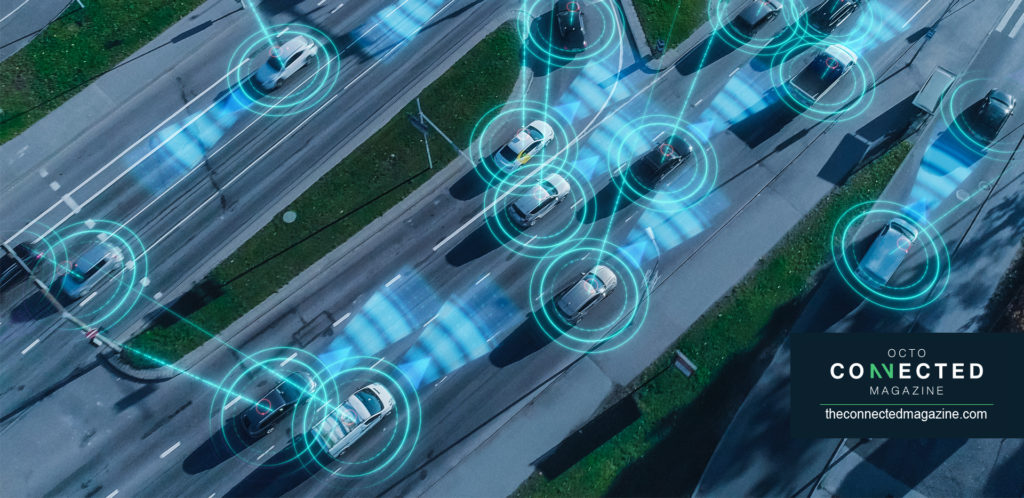
During the development of the 2021 edition of the “Italian Way to Connected Mobility”, OCTO Telematics and The European House – Ambrosetti identified over 35 pilot projects, 14 of which have been considered as “quick win” priorities, i.e. initiatives implementable in a period of about 6 months. These pilot projects are aiming at the realization of OCTO’s Vision Zero and range within 4 strategic areas – “Smart and Connected mobility as enablers for the Smart City”, “Mobility-as-a-Service” (MaaS), “Connected mobility and fleet management” and “Ecosystems and data spaces for the co-creation of services”.
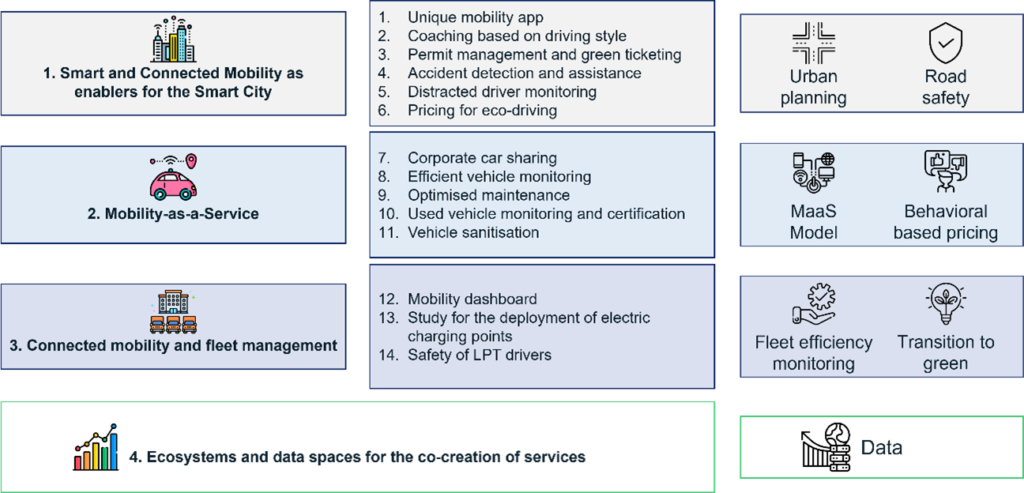
Figure 1 Breakdown of strategic areas by pilot projects and macro-contents. Source: elaboration by The European House – Ambrosetti and OCTO Telematics, 2022
Now, the 2022 edition of this program has been launched under the main goal of materializing those pilot projects by establishing meaningful relationships between different key stakeholders so to promote the birth of a strong ecosystem on connected mobility.
Under such premises, this first article aims to provide an overview of the most relevant case studies in the Italian and global context, with a threefold purpose:
- create a benchmark – on the development of projects related to connected mobility in order to draw inspiration from the best national and international practices characterised by significant elements of innovation and/or the ability to involve multiple stakeholders;
- Understand the specifics and key standpoints related to each strategic area;
- Identify market gaps, such as less implemented pilot projects or new cities where there are opportunities to intervene.
Thanks to an intense research activity, 160 cases have been mapped, of which 92 in Europe (10 in Italy), 24 in the USA and 13 in China.
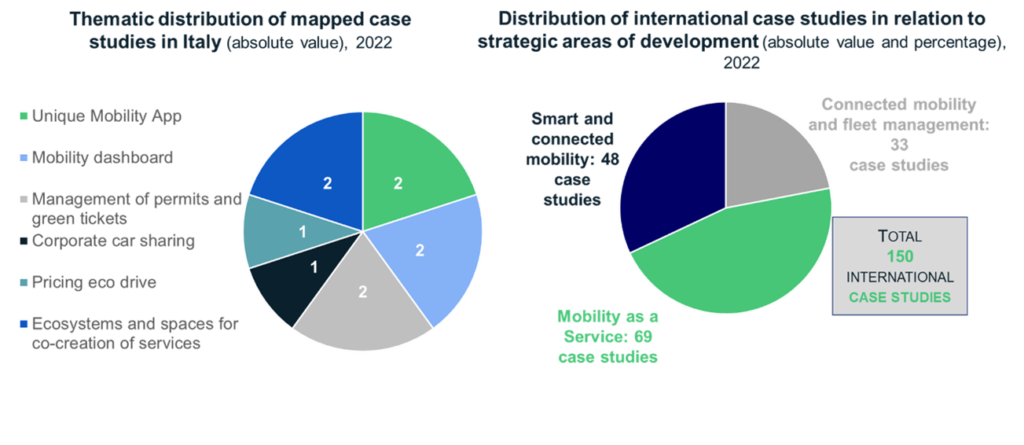
Figure 1 Thematic distribution of the case studies mapped in Italy (left image) and internationally (right image), absolute value and percentage, 2022. Source: elaboration by The European House – Ambrosetti, 2022
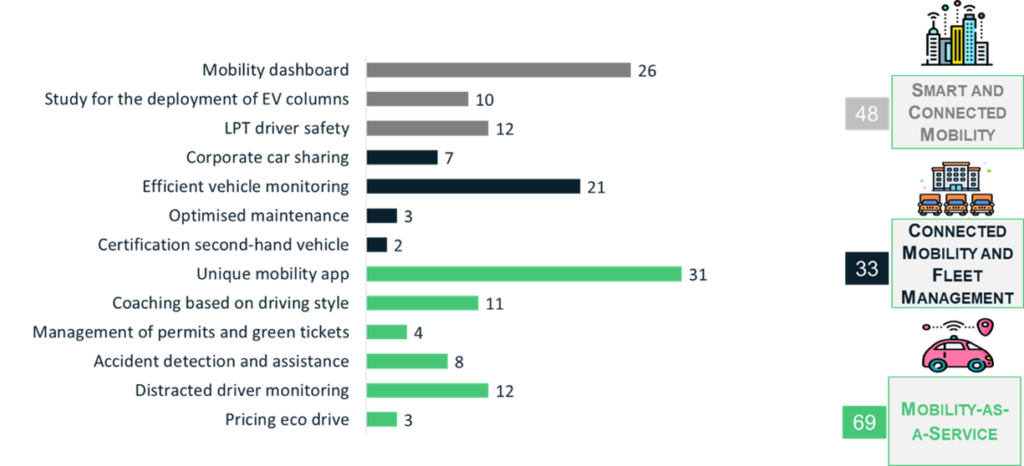
Figure 2 Total number of internatonal case studies analyzed by pilot project, absolute value, 2022. Source: elaboration by The European House – Ambrosetti, 2022
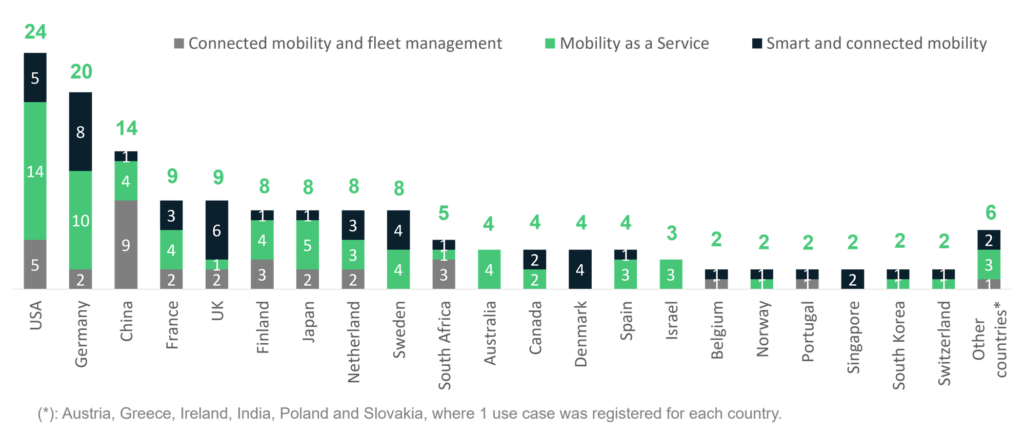
Figure3 Geographical distribution of case studies mapped at international level absolute value, 2022. Source: elaboration by The European House – Ambrosetti, 2022
As far as the “Smart and Connected Mobility” area is concerned, the research identified 2 “Mobility Dashboard” projects in Italy and 33 on a global scale, numbering a 22% of the total use cases mapped, meaning that “Mobility Dashboard” pilots are the most widespread (17.3% – 26 cases) both within the Italian context, and at the international level the. The key points emerged are summarized in the figure below.
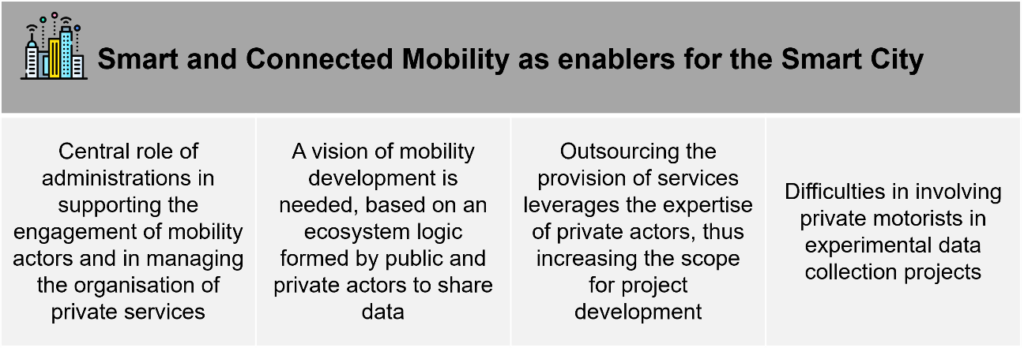
Figure 4 Key themes within the scope of “Smart and Connected Mobility as enablers for the Smart City”. Source: elaboration by The European House – Ambrosetti on various data, 2022
To have a better reference regarding the implementation of pilot projects in this area, one Italian and one international case have been reported below.
As far as the Italian context is concerned, 5T Torino is an in-house company with a 100% public participation operating in the design, implementation and management of systems and services for the Mobility and Infomobility Central of Turin and Piedmont. The main objective of 5T Torino is to create new service models and technological paradigms to respond to the evolving needs of users. Specifically for the creation of Turin and Piedmont Mobility Centers and MaaS systems an ecosystem has been developed, using digital technologies and IoT systems integrated into existing and new city infrastructures. To date, 300 intersections have been “centralized” to control traffic, 1,000 sensors have been installed to measure traffic flows, 71 monitoring cameras, 43 entry gates within the ZTL and 25 infotraffic panels have been installed. [1]
Within the international context, an interesting example of “Safety of LPT drivers” has emerged, realized by the Chinese Roadefend Vision Technology (a company specialized in ADAS systems and connected Big Data management) in partnership with Alibaba. The project was created to increase the safety of drivers thanks to active safety systems (cameras, sensors) installed on board, able to store in the cloud theinformation collected to feed artificial intelligence algorithms able to generate warning signals in case of risk. The Roadefend solution leverages advanced high-resolution image analysis technology for “external” (e.g., weather conditions and proximity to other vehicles/obstacles) and “internal” (e.g., driver facial expressions to detect signs of distraction or fatigue) monitoring. In addition, a cloud platform has been created, in which real-time driving data collected via GPS are displayed in a continuously updated dashboard. To date, Roadefend devices have been installed in 290 million vehicles that have covered a total of 3 billion km.[2]
Regarding projects for the promotion of “Mobility-as-a-Service”, in Italy there have been identified the following key use cases:
- 2 use cases of “Single mobility app”,
- 2 of “Management of permits and green tickets”
- 1 case of “Pricing for eco-driving” were mapped.
On a global scale, 69 projects were identified (46% of the total), of which 31 are Mobility Apps, which is the most implemented pilot and alone represents 20.6% of the total cases. From the analysis of all projects, 5 recurring themes were identified and are summarized in the figure below.
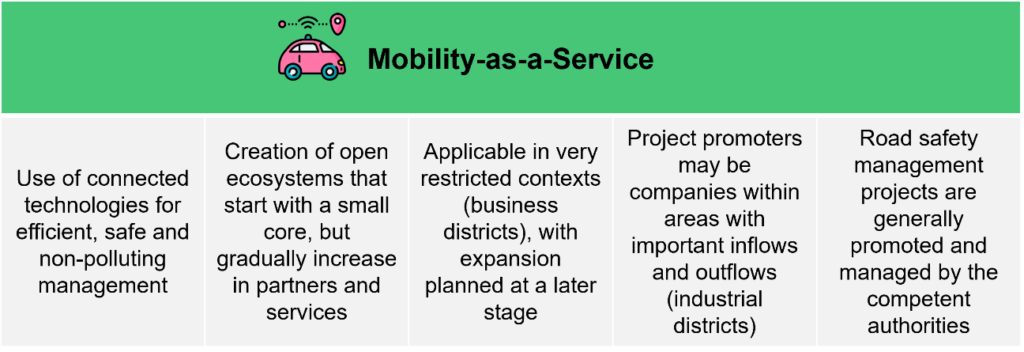
Figure 5 Key themes of the “Mobility-as-a-Service” area. Source: elaboration by The European House – Ambrosetti on various data, 2022
Among the 5 relevant Italian use cases, the most interesting one is the mobility app for the Florence metropolitan area developed by the Municipality of Florence and ATAF (Azienda Trasporti dell’Area Fiorentina). This project was created with the objective of creating an application to allow users to plan bus trips and purchase tickets directly through the app. The app also allows users to monitor their travel schedules in real time thanks to the real-time detection of the position of the vehicles. To date, the app is used by more than 600,000 citizens residing in the City of Florence and 3.5 million tourists, thus becoming the main channel of communication between ATAF and the users of urban public transport services with an interaction rate that has increased 10 times thanks to it. [3]
On the other hand, the collaboration between public and private players in Finland, Norway, Sweden and Denmark for the development of NordicWay represents the most interesting use case on an international level. This is a project that uses V2X (Vehicle-to-Everything) connectivity technologies to allow vehicles to communicate with each other and with the surrounding road infrastructure in order to reduce driving risks during the winter months. The starting point was the expansion of high-speed connectivity along the road sections involved in the experimentation. The next phase will be aimed at identifying use cases and new areas of work by the City Authorities, involving new private partners, which will allow the system to communicate the exact point of an accident and map the areas with the highest accident rate. In the development of NordicWay, 35 Public and Private actors have been involved. In the coming years, NordicWay aims to create a connected system capable of detecting road signs, traffic lights, vehicles in an emergency state, hazards and geographical areas intended for particular forms of mobility (ZTL, green zones, pedestrian areas). There are currently 17 active areas of experimentation for the improvement of safety and connectivity of roads that will result in an estimated decrease of 6.3% of fatal accidents in 2030.[4]
In the area “Connected mobility and fleet management”, only one Italian case of Corporate Car Sharing amongst 48 other cases at international level (32% of the total) have been identified, mostly within the category of efficient vehicle monitoring (14% – 21 cases). From the analysis of all the projects, 3 key points were identified, summarized in the figure below.
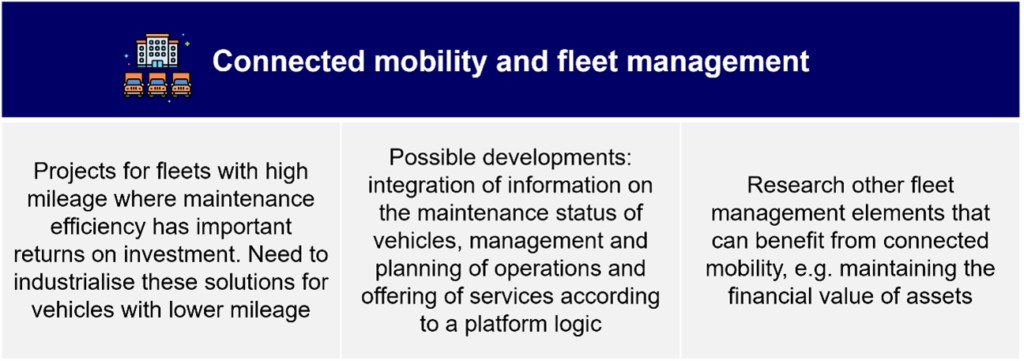
Figure 6 Key themes of the “Connected mobility and fleet management” area. Source: elaboration by The European House – Ambrosetti on various data, 2022
The Italian case refers to Terna’s Corporate Car Sharing platform, which was created to provide an innovative and efficient tool for managing the company’s fleet, enabling the fleet manager to identify the most suitable vehicle for operational needs thanks to a dashboard of tools for controlling company vehicles, which is associated with the production of timely diagnostic reports. Employees can use the T-Fleet app to book company vehicles (by geolocating the nearest vehicle within the operational sites) and request assistance (active support services are available 24 hours a day). To implement this project, Terna has introduced 1,400 new vehicles (special vehicles, cars, vans and off-road vehicles), 220 of which are electric vehicles distributed throughout 80 sites throughout Italy. To date, Terna has involved 150 employees in testing the app and the new CCS system.[5]
An interesting case of “optimized vehicle maintenance” has been identified in Portugal, where startup Stratio (a leader in real-time fleet maintenance) has developed artificial intelligence systems to optimize maintenance interventions. The goal of the project is to analyze the real-time status of the vehicle (bus or other heavy equipment) to provide predictive maintenance services, thusreducing downtime and costs related to unplanned breakdowns, and providing fleet managers with an easy-to-use platform rich in high-value information to improve daily operations. Fleets are equipped with IoT systems that enable real-time monitoring of data collected from vehicles, analyzed by a predictive AI model that can create insights to reduce downtime risks and prevent breakdowns by suggesting the optimal time to perform maintenance operations. Stratio’s technologies are used in 5 of the top 10 transportation companies worldwide with a total of 1.3 billion users and 5 billion pieces of information processed every day.[6]
The last strategic area is “Ecosystems and data spaces for the co-creation of services”: the themes of data sharing and collaboration between the various mobility players are, in fact, transversal to the three areas previously illustrated. It follows that the considerations relating to this strategic area, and reported in the next figure, are of considerable importance and must be considered to create the enabling conditions for the development of future mobility systems.
In detail, 4 use-cases have been identified: 2 Italian projects and 2 international ones, all characterized by a particularly pronounced open source nature.
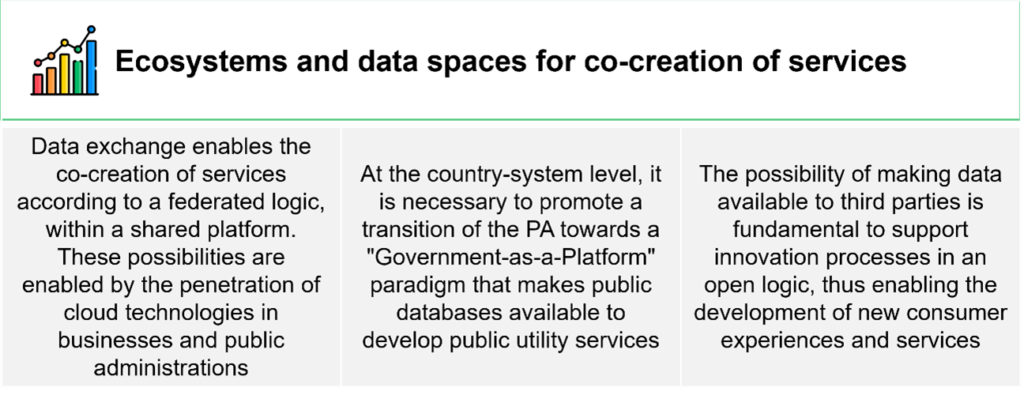
Figure 7 Key themes of the scope “Ecosystems and data spaces for the co-creation of services”. Source: elaboration by The European House – Ambrosetti on various data, 2022
A very interesting Italian case is C-Roads Italy 2, born from a European initiative aimed at stimulating cooperation between Public and Private actors to test and implement “cooperative intelligent transport systems” (C-ITS) such as: optimal speed warning, priority request for road priority by designated vehicles, intersection safety violation signals, information on availability of public parking and traffic conditions. For the realization of this project, it was necessary to adapt city infrastructures (in Turin, Trento and Verona): in total, 70 traffic lights were upgraded and several buildings (public and private) were modernized to install C-ITS connectivity tools. The C-Roads Italy 2 pilot project started in 2018, will end in 2023 and, to date, has included the involvement of 11 national stakeholders.[7]
At the international level, the “Transport for London Unified API” project was deemed particularly relevant. Created with the aim of establishing an open-source platform to collect and exchange data from every means of public transport in London in real time, “Transport for London Unified API” is the result of more than 11 thematic databases that are constantly fed in real time with data coming both from city infrastructures and from databases made available by private stakeholders. The gathering and displaying of these data in an open logic have allowed, to date, the development of over 650 applications, favouring the creation of a solid network of innovative companies in the field of mobility able to create value-added services for citizens: as a result, 42% of Londoners use at least one app based on Transport for London’s open data.[8]
Author:
The European House – Ambrosetti
[1] Source: Re-elaboration by The European House – Ambrosetti on data from Piedmont Region and 5T, 2022.
[2] Source: Re-elaboration by The European House – Ambrosetti on data from Roadfend, 2022.
[3] Source: Re-elaboration by The European House – Ambrosetti on ATAF data, 2022.
[4] Source: Re-elaboration by The European House – Ambrosetti on Nordicway 2 and Nordicway 3 data, 2022.
[5] Source: Re-elaboration by The European House – Ambrosetti on Terna data, 2022.
[6] Source: Re-elaboration by The European House – Ambrosetti on Stratio data, 2022.
[7] Source: Re-elaboration by The European House – Ambrosetti on data from C-Roads Italy 2, 2022.
[8] Source: Re-elaboration by The European House – Ambrosetti on Transport for London Unified API data, 2022.